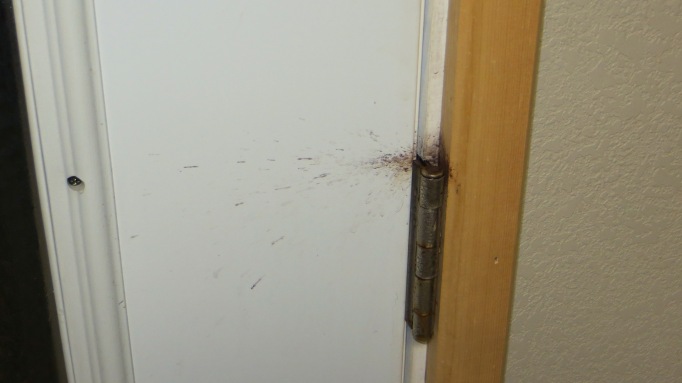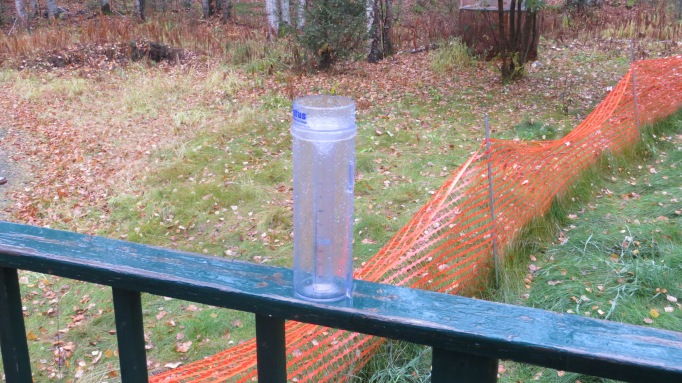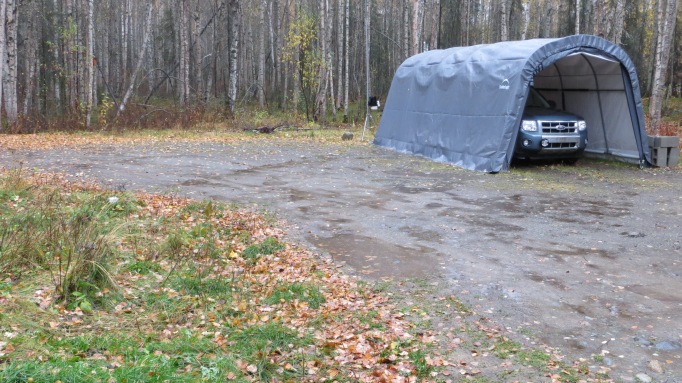Wow, what a difference a week can make! Just seven days back we were entering a substantial cold snap that lasted four full days during which we never saw temps rise above 0° F (-17.8° C) and our lowest temp was probably a bit below -40° F (-40° C). I write ‘probably a bit below’ because my two electronic temperature sensors stopped transmitting between -34° F (-36.7° C) and -39.7° F (-39.8° C); I did see -39.7° F (-39.8° C) on my Ambient weather station outdoor temp sensor at 05:20 Thursday (January 19th) morning but when I finally arose around 07:30 the sensor was no longer transmitting data. Given the sun didn’t rise for another two hours I’m sure we dipped below -40° F/° C on that frigid morning.
One key learning was honored with my order of an 18” bi-metallic dial type thermometer good to -60° F (-51.1° C); I will not have to guess at low temps below -40° F/° C from this point forward. Despite having lived in this area for almost three and a half years until last week the coldest air I’d experienced was Chicago’s record low temp of -27.2° F (-32.9° C) which occurred on January 20, 1985. Although memory can be a tricky thing, especially across 32 years, my remembrances of that Chicago cold snap were of much colder temps. However, I’d wager the humidity was higher in Chicago and there were winds to 40 mph (64.4 kph) which were producing wind chills colder than -70° F (-56.7° C).
Living within an immense span of boreal forest – if in doubt just look up Talkeetna using Google Maps and pull out to view the northern half of the Susitna Valley – has the advantage of really degrading wind. We do see substantial winds off the Talkeetna Mountains to the east and The Alaska Range to the north but while the tops of the birch trees – around 35 feet (10.7 meters) in elevation – might be really swaying in winds probably gusting to 30 to 40 mph (48 to 64 kph) I rarely measure even 5 mph (8 kph) breezes at ground level. Thus during the cold snap I saw very little in terms of wind chill. This allowed me to replace the lithium battery in my Davis Vantage Pro 2 weather station’s sensor platform in -30° F (-34.4° C) temps while maintaining complete comfort. I’d learned the value of layering outdoor clothing when facing Alaskan winters early on. Only my fingers became a bit chilled when I had to swap my insulated mittens for poly pro glove liners to do the actual ‘fine’ work of swapping the batteries.
My buddy Sarge installed a pair of exterior storm doors on my front and back doors during his October visit and I was impressed no end regarding their insulating ability. I’d wager my main floor stayed at least 3° F to 5° F warmer thanks to these doors. I haven’t seen many places that utilize storm doors up here; the most obvious issue would be any door opening out onto an unprotected area. If we were to receive 12” (30.5 cm) or more of snow it might be impossible to open the storm door. Thankfully my front door opens onto my front porch and hence snow build up is not an issue; when it is snowing I do try to keep the back porch cleared more often to facilitate getting the door open once the snow ceases.
I also learned a very important lesson regarding said aluminum storm doors; when the exterior temp drops to -25° F (-31.7° C) one shouldn’t touch any of the bare metal with bare skin! Doing so produces the equivalent of an electrical shock as it almost instantaneously pulls the heat from one’s skin. This is also true regarding the window glass; I started keeping a pair of poly pro glove liners at the front door so when I needed to let the kidz out I could put one on before pushing the storm door open. In addition I learned that the brutal cold can have deleterious effects on internal hardware; see the following picture of what happens when ya try to force a frozen hinge to function:

Mostly frozen main door hinge just inside the mud room
This particular hinge is part of my front door which is in the mud room.
My first winter in this area I learned of the necessity of keeping air circulating within one’s dwelling during cold snaps. My initial inclination was to close off a couple of second floor rooms which were not in use. Because my dwelling began its life as a cabin and has since had a number of additions, including the second floor, the air circulation is almost non-existent. During a three day run in December of 2013 when temps never reached zero and lows were dropping to -25.2° F (-31.8° C) I entered one of the shut up spare rooms to find the windows looking as such:

East facing window in spare bedroom on second floor after room was closed up for two days when temps ranged from 0° F (-17.8° C) to -25.2° F (-31.7° C)
Needless to say I was not happy and quickly determined it was best to just deal with the cold air coming from the unused rooms while leaving them open such that some air could circulate!
My new home is an amazing place and Alaska is always teaching me something new; I need only keep my eyes and ears open and learn of her ways. There are many folks out there who think I’m borderline insane for seeking out such cold weather extremes; I suppose one could make such a case but then I’ve always loved the cold and, not surprisingly, loathed the heat especially when coupled with humidity. I did venture out briefly when the air temps were below -30° F (-34.4° C) and the conditions were amazing. The air was clear like I’ve never seen previously and the ‘immense silence’ was even more…immense! Just breathing took on a new feeling as air at such cold temps definitely causes one’s lungs to ‘tingle’. I remain in awe of this incredibly majestic albeit amazingly extreme state; while not for everyone those bitten by the ‘Alaska bug’ can never get enough of her magic…


